Things You Should Know About Venice
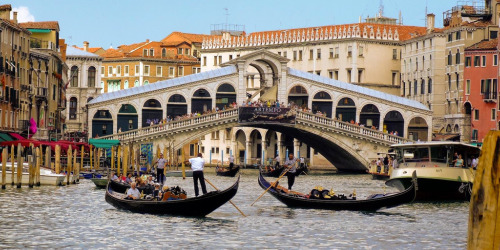 I love Venice. This should come as no surprise to anyone who’s looked around this site at all, but as I never tire of gushing about how much I love Venice, it bears repeating. And heck, even if it doesn’t technically bear repeating, I’m saying it again anyway (and will likely say it about a gajillion times more in the future).
I love Venice. This should come as no surprise to anyone who’s looked around this site at all, but as I never tire of gushing about how much I love Venice, it bears repeating. And heck, even if it doesn’t technically bear repeating, I’m saying it again anyway (and will likely say it about a gajillion times more in the future).
Despite how much I talk about Venice, however, I continue to hear reports of first-time visits to the canal city from people who were surprised and disappointed by one thing or another. On the one hand, you’d think there’s enough that’s been written and said about Venice over the years that people couldn’t possibly be surprised by anything – and on the other, much of what’s been written and said is so heavily romanticized that it glosses over some of the basic things everyone should know before they go to Venice.
Which is why I thought I’d try to dispense with the flowery language (for once) in an article about Venice and talk about the practical stuff. So even if you feel like you know the city already – even if you’ve been dreaming about visiting since you were ten years old – here are some things you should know about Venice before you get there.
Venice doesn’t smell.
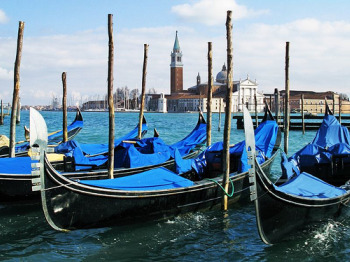 I’m going to start off here by being an Italy (ahem) Delusion DismantlerTM for a moment. Before my first visit to Venice (and repeatedly since then, too) I heard people say, “Oh, be careful in Venice – it smells.” It’s one of the most popular
I’m going to start off here by being an Italy (ahem) Delusion DismantlerTM for a moment. Before my first visit to Venice (and repeatedly since then, too) I heard people say, “Oh, be careful in Venice – it smells.” It’s one of the most popular myths delusions you’ll hear about the city, how the canals reek of sewage or algae or some combination thereof, and especially during the summer and on smaller canals.
I inhaled deeply during my first trip, which was in July, and never smelled a thing. I’ve since visited in August, September, February, and June – and I have yet to smell anything other than salt water in the canals. I’ve read reports that sometimes when a canal has been drained for repair that it can smell a bit. I’m told that sometimes in the summer when the water levels are lower the stagnant water in the smaller canals can smell a bit. I’ve heard that during some types of algae blooms or when the tides come in “just so” it can smell a bit. But I think the old notion of Venice being a city where the canals smell strongly and regularly is just that – an old notion.
Venice is expensive.
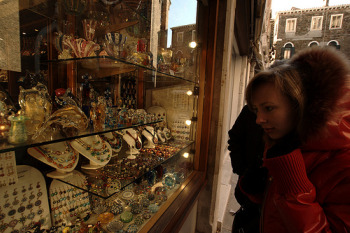 One of the sad truths about Venice that, to a certain extent, sours people on the city no matter what their experience there is like otherwise, is that it’s a very expensive city to visit. Even if you do everything right as a budget traveler, Venice is still often more expensive than other cities in Italy and elsewhere in Europe. And if you’re not thinking ahead and make mistakes with regard to when you visit or where you stay, you could end up paying dearly for the error.
One of the sad truths about Venice that, to a certain extent, sours people on the city no matter what their experience there is like otherwise, is that it’s a very expensive city to visit. Even if you do everything right as a budget traveler, Venice is still often more expensive than other cities in Italy and elsewhere in Europe. And if you’re not thinking ahead and make mistakes with regard to when you visit or where you stay, you could end up paying dearly for the error.
To complicate matters, Venice doesn’t have much of an off-season, if there’s one at all. You could be there in the dead of a cold, damp, Venetian winter and still find crowds of tourists in the Piazza San Marco. They’d be smaller crowds than are there in June, but it’s not like they clear out entirely.
Still, to have the best Venice experience possible without spending a fortune, it’s best to visit at a slower time of year (late fall, winter – as long as it’s not over Carnevale, or early spring) to take advantage of lower prices at the hotels in Venice. You can also stay in one of the Venice hostels, although there are only a few genuine hostels on the islands.
Accommodation options on the mainland tend to be considerably cheaper, and if your budget really won’t allow overnighting on the islands themselves then that’s the way to go – but if you can afford to spend one night on the islands before moving to a mainland hotel or hostel for the rest of your trip, do that. There’s nothing like Venice early in the morning or late at night when the day-trippers aren’t there.
And I’ve also got a list of the free things to do in Venice, too, which should help your budget stay within reason.
Public transport in Venice is expensive, too.
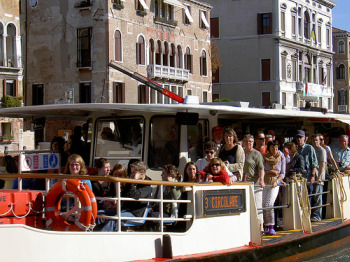 Also, to continue the theme, even the bus-boats that serve as public transportation in Venice aren’t cheap, with one ticket (good for an hour) costing €6.50. For just one ride in an hour, that’s a steep fare. And of course we’ve all heard about tourists getting fleeced by gondoliers charging hundreds for a gondola ride, right?
Also, to continue the theme, even the bus-boats that serve as public transportation in Venice aren’t cheap, with one ticket (good for an hour) costing €6.50. For just one ride in an hour, that’s a steep fare. And of course we’ve all heard about tourists getting fleeced by gondoliers charging hundreds for a gondola ride, right?
If you’re only in Venice for a short time and the weather’s nice, you might as well skip the bus-boats and just walk everywhere. If you’ll be in the city for a few days, there are some Venice discount passes that will save you money on transportation as well as some of the museums and such in the city.
As for the gondola rides, there actually are official fares which the gondoliers are supposed to adhere to – they’re published each year, and if you know what they are in advance then you’ll know you can walk away from someone who’s demanding too much.
But if even the official rates are too high, may I suggest taking what’s called a “traghetto” across the Grand Canal? It’s a gondola, just not a fancily-decorated one, and there are several points where they shuttle people from one side of the Grand Canal to the other for a euro or two. It’s a short trip, it’s not romantic, and if you’re attempting to blend in you’ll stand for the crossing like the locals do – but it’s a uniquely Venetian experience, and a cheap thrill in a city that doesn’t have many of those.
For as small as Venice is, there is a surprisingly crowded “tourist track” in the city.
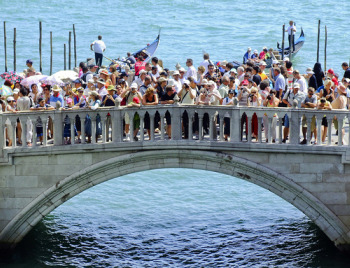 Maybe it’s because Venice is such a popular stop on so many Mediterranean cruise itineraries. Maybe it’s because it’s an expensive city to spend the night in. Whatever the reason, the number of day-trippers who flood Venice every morning and file back out each night is breathtaking. And because all those day-trippers have limited time, there’s a very well-established “tourist track” running through the heart of the city. It’s as if they’re being herded by Australian sheep dogs from one end of the city to the other and back again.
Maybe it’s because Venice is such a popular stop on so many Mediterranean cruise itineraries. Maybe it’s because it’s an expensive city to spend the night in. Whatever the reason, the number of day-trippers who flood Venice every morning and file back out each night is breathtaking. And because all those day-trippers have limited time, there’s a very well-established “tourist track” running through the heart of the city. It’s as if they’re being herded by Australian sheep dogs from one end of the city to the other and back again.
The good news here is that makes it even easier to get off of the tourist track and away from the herd.
The main part of the tourist track runs from the train station along the Lista di Spagna, and continues on as the road changes names a few times before arriving at the bottleneck that is the Rialto Bridge. It doesn’t cross the bridge, however, because the cheese at the end of the proverbial maze is still to come. From the Rialto the path isn’t as clearly defined, but there are still dominant pathways you’ll notice people following to make their way to St. Mark’s Square.
I am not joking when I say that by doing something as simple as walking perpendicular to one of the “main streets” you’ll get away from the vast majority if the crowds within the equivalent of 2-3 blocks (if the concept of blocks existed in Venice, that is). And if you want to be really radical, cross over to the other side of the Grand Canal and – again – walk perpendicular to whatever “main street” you find yourself on and you’ll end up in an even quieter spot.
This works in both the winter and the summer – I’ve tried it. And it has the added benefit of forcing you to do the thing I think is the #1 thing to do in Venice anyway – to get lost.
Venice is made up of more than 100 islands.
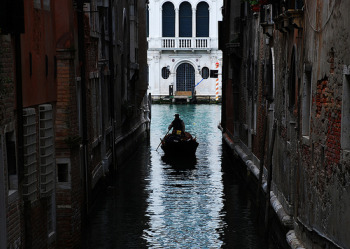 A quick look at a map will show you that Venice is an island, but it takes a much more detailed map to show that in fact it’s not one big island but an intricate puzzle of more than 100 islands separated by all those canals. Understanding which island you’re on at any given moment is nigh unto impossible, and (thankfully) not even important, because it’s easy to cross from island to island and back again by zig-zagging over the countless tiny bridges. The Grand Canal forms the biggest and most noticeable division between the islands, but each tiny canal is the border of a Venetian island.
A quick look at a map will show you that Venice is an island, but it takes a much more detailed map to show that in fact it’s not one big island but an intricate puzzle of more than 100 islands separated by all those canals. Understanding which island you’re on at any given moment is nigh unto impossible, and (thankfully) not even important, because it’s easy to cross from island to island and back again by zig-zagging over the countless tiny bridges. The Grand Canal forms the biggest and most noticeable division between the islands, but each tiny canal is the border of a Venetian island.
Instead of knowing which island you’re on, the important thing when it comes to finding your way around Venice is really what “sestiere,” or district, you’re in. There are six “sestieri” in Venice – Cannaregio, San Polo, Santa Croce, Dorsoduro, San Marco, and Castello – and it’s these names that will appear on the addresses in Venice.
Which leads me to mention the insane addressing system Venice employs. It’s fabulous to get lost in the city, but when you’re actually looking for something – your hotel, for instance – and all you have is a Venetian street address, you’re going to get frustrated pretty quickly. Addresses in Venice give you the number of the building and the name of the sestiere – but usually leave off the name of the street entirely. Before you leave home, or from a place where you’ve got internet access, be sure to triangulate (even roughly) any places you know you’ll need to find using this extremely helpful website for how to find addresses in Venice.
Does Venice have more than its fair share of bad food? Yes. Can you avoid it easily? Yes.
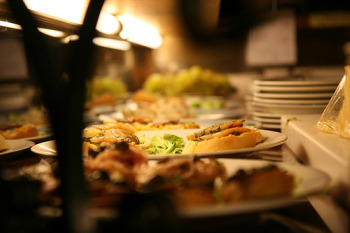 Venice is famous for its bad food, or its expensive food, or (worst) its bad and expensive food. And there’s plenty of those to be found. It almost makes sense, if you think about it – Venice knows you’re still going to make the trip even if you hear the food sucks, because there’s no place like it on earth. Why pull out the good china, Venice reasons, if you’re not really there for the food?
Venice is famous for its bad food, or its expensive food, or (worst) its bad and expensive food. And there’s plenty of those to be found. It almost makes sense, if you think about it – Venice knows you’re still going to make the trip even if you hear the food sucks, because there’s no place like it on earth. Why pull out the good china, Venice reasons, if you’re not really there for the food?
But there is good food in Venice – it’s not just at a few places, or impossible to find, or even necessary to speak Italian to get. You just need to make the tiniest amount of effort to avoid coming home from a Venice trip complaining (like everyone else) about the food.
Simply by getting off the main tourist track in Venice (see the point above), steering well clear of any place with a menu translated into umpteen thousand different languages, gravitating toward places that seem to be full of people speaking Italian, and doing a teensy bit of research about what foods are local to Venice you’ll be rewarded with some incredible Venetian fare. To assist you with any language barriers you might face on a menu, and also to help you learn what’s local and seasonal in Venice, I can’t recommend the pocket-sized book “The Hungry Traveler: Italy” highly enough.
Venice has almost no cars.
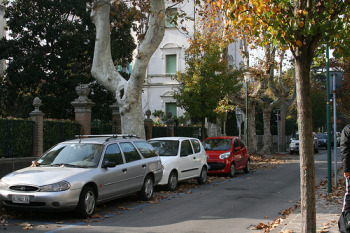 One of the things everyone knows about Venice is that it has canals where other cities have roads, and boats where other cities have cars (and kayaks where other cities have bicycles, if you think like my friend Rene of Venice Kayak!). It’s still one of those facts you can be aware of but not really understand how it impacts your experience until you’re walking around the city undisturbed by the sound of tires on asphalt and unhindered by stoplights. The lack of cars is one of the things that makes Venice so utterly romantic.
One of the things everyone knows about Venice is that it has canals where other cities have roads, and boats where other cities have cars (and kayaks where other cities have bicycles, if you think like my friend Rene of Venice Kayak!). It’s still one of those facts you can be aware of but not really understand how it impacts your experience until you’re walking around the city undisturbed by the sound of tires on asphalt and unhindered by stoplights. The lack of cars is one of the things that makes Venice so utterly romantic.
But to say there are no cars in Venice isn’t entirely true.
To begin with, there’s the big car park over at Piazzale Roma where, if you’ve driven to Venice (which you should try to avoid at all costs) is where you’ve parked your car. It’s far enough to one side of the city that unless you drove there, took a bus to Venice (it’s also where the city’s bus terminal is), or have a hotel nearby, you probably won’t even see the Piazzale Roma or hear any of the cars parked there during your stay.
There is an island in Venice, however, that has roads instead of canals – and that’s the Lido. The Venice Lido isn’t one of the islands of the main part of Venice, and many visitors never make it out to the Lido at all. But it’s where Venice’s sandy beaches are, so if you’re there during the summer and craving sun and sand you’d head for the Lido. It’s also where the Venice Film Festival is held each year, so to get a peek at the stars who turn up you’d also catch a boat for the Lido.
And once you got there, you’d have to get back into the habit of looking both ways before you crossed the street.
For more details on how to make falling in love with Venice a certainty, let these articles be your guide:
- 5 Essential Venice Survival Tips
- Top 10 Things to Do in Venice
- Discover Romantic Venice in Four Easy Steps
- Flying Into Venice is a Good Idea
- How to Eat Well in Venice
- Where to Eat in Venice
- Going to Venice guide from Away.com
photos, top to bottom, by: llamnudds, Dimitry B, mardy78, randwill, llamnudds, degreezero2000, Allerina & Glen MacLarty, Pirate Alice